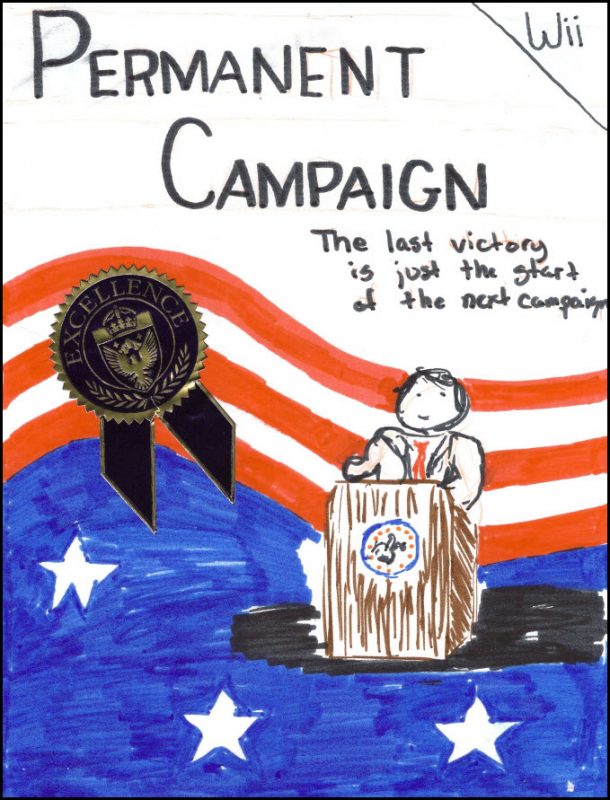One of the purposes for attending this conference (Innovations in eLearning at GMU) was to attend an all-day workshop on game design conducted by Brenda Brathwaite. We spent the first half the day learning about game design in general through the process of designing some simple games (digital or non-digital).
When designing a digital game, you have to “Know Your Constraints” and the process of walking through this list helps you to funnel your ideas down to something that is manageable.
• Identify the genre/type of game (e.g. simulation, adventure, first-person-shooter)
• Rating (Will the content of the game restrict your audience?)
• Audience (Who is your target audience?)
• Budget
• Platform (e.g. web browser, Wii, Facebook)
• Tone/Style
• Incidentals (details that are beyond your control, i.e. a funder insists there are no guns anywhere in the game)
• Game Engines
• Release date (sets timeline for what can reasonably be done)
• Skill set limitations (Can your designers actually handle the job? No? Then either change the job or the designers)
Through the process of attempting to design games with constraints ourselves, we learned how game design can be a powerful tool to motivate creative thinking. For example, we had to design a video game where the objective was to decide the winner in a Civil War battle, but there could be no combat or territorial acquisition in the game, and we had 10 minutes to do it. Many teams came up with resource allocation or swaying members of the opponent’s side to yours as a game strategy to decide battles. Not me. I suggested “Fife Hero” as a method to win a battle (envision Guitar Hero only with fife input devices and Civil War songs).

At the end of the morning, I realized that “game design” could provide two very valuable classroom activities for learning in mathematics:
- Design a game to learn _______. (e.g. alternate number systems, alternate bases, integration techniques, what the graphs of functions look like, etc.) The process of creating a game requires that the participants first really understand what the game will be teaching. I suspect I will be assigning a few game design projects in the fall to my Calculus and Math for Elementary Teachers classes.
- Some games (probably most games) involve mathematics. Whether it is in weighted decision-making, interacting with the game board, drawing certain cards, or in keeping track of points, a good project to use in math courses would be mathematically analyze a game, recreate the game play in a spreadsheet, or create a better version of a game after doing the mathematical analysis. Again, I’m thinking of using this in the fall, at least for my honors courses (starting to have too many ideas and not enough honors courses to play with). For example, Brenda told us about how she modeled Monopoly on a spreadsheet with a random number generator to simulate “turns” and by making several assumptions about the probability of player actions. In one click, you could play the entire game and see who won (Brenda considers games like Candyland and Monopoly to be akin to a hostage situation). The only drawback is that I might end up in over my head on some of the mathematics if the game they choose is difficult (in this case, I will rely on my awesome social network to provide some help).




